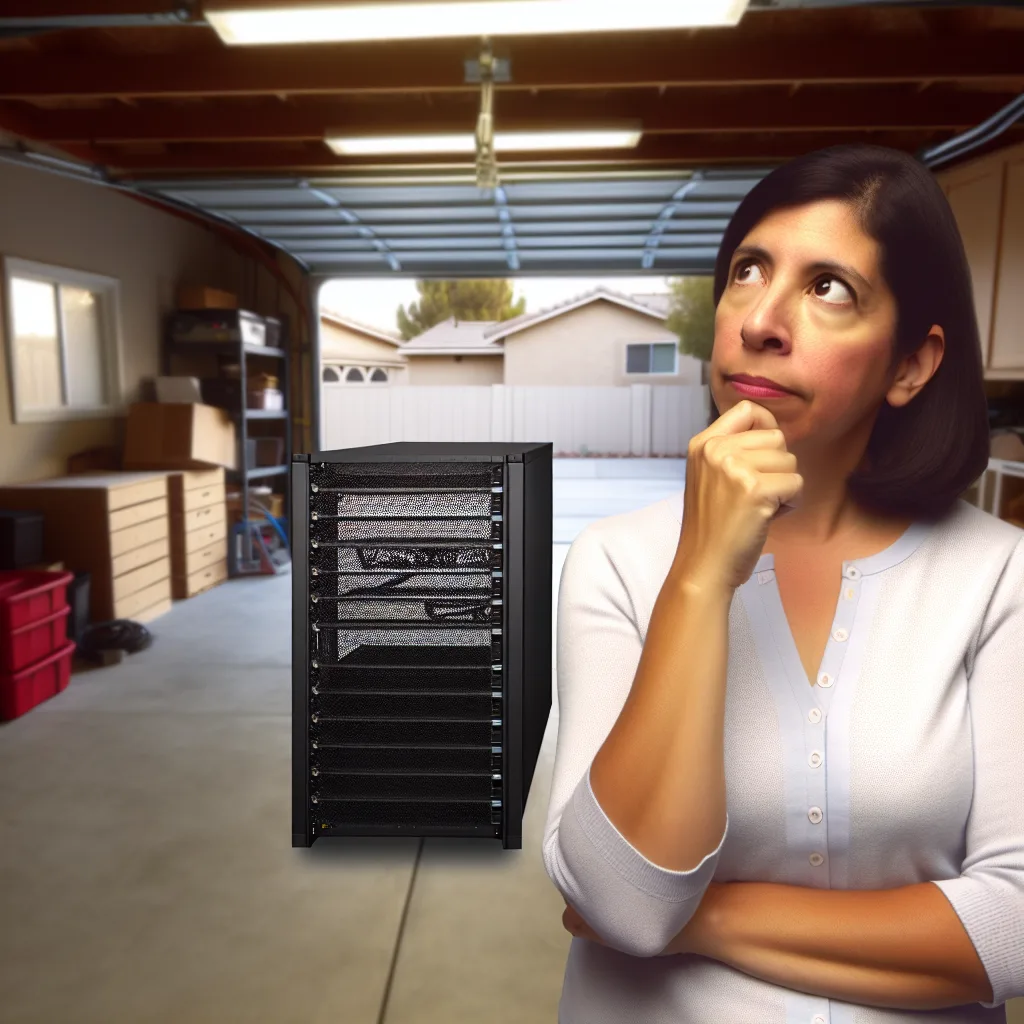Before you haul a giant metal box into your house, let’s figure out if you actually need it.
It’s a classic scenario for anyone getting into building their own tech setup at home. You’re scrolling through a marketplace or get a text from a friend: “Hey, my buddy is selling a server rack for cheap. You interested?” Suddenly, you’re faced with a decision you didn’t even know you had to make. Is it a good deal? Do you even need it? If you’re starting to build out a more serious setup, the question of a home lab server rack is bound to come up sooner or later.
I found myself in this exact spot a while back. A friend of a friend was moving and offered me a 38U rack for $90. My mind immediately started racing. I could finally get my networking gear, my media server, and that old PC I planned to turn into a firewall all organized in one professional-looking place. But then, reality set in. A 38U rack is big. Like, really big. Before you jump on a seemingly great deal, let’s walk through how to decide if it’s a bargain or just a giant piece of metal that will end up collecting dust in your garage.
So, What Exactly is a Home Lab Server Rack?
First things first, let’s clarify what we’re talking about. A server rack is a standardized frame designed to hold various pieces of IT equipment, from servers and network switches to patch panels and power distribution units (PDUs). The “standardized” part is key. It means you can buy gear from different manufacturers and it will all fit perfectly.
The height of these racks is measured in “Rack Units,” or “U.” One U is 1.75 inches. So when someone offers you a 38U rack, they’re talking about a cabinet that has about 66.5 inches of usable vertical space. The rack itself is usually over six feet tall. This is professional-grade stuff, the kind you see in data centers.
The $90 Question: Is This Used Rack a Good Deal?
Short answer: From a purely financial standpoint, yes, $90 for a 38U rack is an amazing deal. New racks of that size from brands like StarTech.com can easily cost anywhere from $400 to over $1,000, depending on the features like doors, side panels, and cooling fans.
However, the price is only one part of the equation. The real question is about value. Is it valuable to you? A free piano is a terrible deal if you live in a studio apartment and don’t know how to play. The same logic applies here.
Before You Buy: Key Questions for Your Home Lab Server Rack
Instead of just looking at the price tag, ask yourself these crucial questions. Your answers will tell you if you should jump on that deal or politely pass.
- Where in the world will I put this?
A 38U rack isn’t something you can tuck away in a closet. It’s a significant piece of furniture. You need a spot with a solid floor (they get heavy when loaded), enough clearance in front and behind for access, and good ventilation. For most people, this means a basement or a garage. Get out a tape measure and map out the exact footprint before you commit. - Can I handle the noise and heat?
Centralizing all your equipment means you’re also centralizing all the noise and heat it generates. Server fans are not quiet. They’re designed for performance, not peace. If your only available space is a corner of your home office, a full-size rack might quickly become an annoying roommate. -
What am I actually putting in it?
Be honest with yourself. Do you have rack-mountable gear right now, or plans to buy it soon? If your “homelab” is a Raspberry Pi, a Synology NAS, and your internet provider’s router, you absolutely do not need a rack. They can all sit happily on a shelf. But if you have or are planning to get rack-mount servers, switches, and patch panels, then a rack becomes essential for organization and airflow. -
What about the “Partner Acceptance Factor”?
This is a real thing. It’s the unofficial, but critical, metric of how happy your significant other, roommate, or family will be with your new hobby taking up a huge chunk of physical space. A six-foot-tall metal cabinet appearing in the house can be a tough negotiation.
Smart Alternatives to a Giant Home Lab Server Rack
If you’ve read this far and realized a 38U behemoth is overkill, don’t worry! You can still get your gear organized without turning your home into a mini data center.
- Small Racks (6U to 12U): These are fantastic. You can get small racks that sit on a desk or even mount to a wall. They’re perfect for holding a switch, a patch panel, and maybe a small shelf for a modem or a mini-PC.
- Shelving Units: A simple, sturdy metal or wood shelf can work wonders. It keeps things neat, provides good airflow, and costs a fraction of a dedicated rack.
- The IKEA Lack Table: A legendary, budget-friendly option in the homelab community. The distance between the legs of the small Lack table is almost exactly 19 inches—the standard width of a rack. People often stack them to create a makeshift, open-air rack.
Ultimately, building a homelab is a journey. For excellent examples and deep dives into all kinds of setups, from the simple to the complex, communities like ServeTheHome are an invaluable resource.
So, should you buy that $90 rack? If you have the space, a clear need for it, and a plan for managing the logistics, then you’ve stumbled upon a fantastic deal that could serve you for years. But if you’re just starting out, your money and space might be better spent on the gear itself, letting it live on a simple shelf until your ambitions grow.
